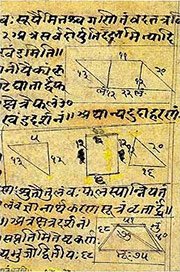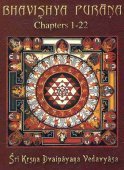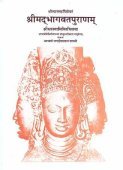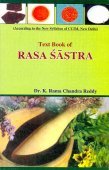Vyoman, Vyoma: 26 definitions
Introduction:
Vyoman means something in Buddhism, Pali, Hinduism, Sanskrit, the history of ancient India, Marathi, Hindi. If you want to know the exact meaning, history, etymology or English translation of this term then check out the descriptions on this page. Add your comment or reference to a book if you want to contribute to this summary article.
In Hinduism
Ayurveda (science of life)
Rasashastra (Alchemy and Herbo-Mineral preparations)
Source: Google Books: The Alchemical BodyVyoma (व्योम), as both mica and ether, is identified with the Goddess’s sexual emission. Mercury (rasa), when it is identified with the soul (jīva), when it transmutes through speech of which the substrate is ether (śabha-vedha), and when it becomes possessed of the power of flight (khecara/khecaratā), is itself associated with ether. In this way, both mercury and mica, the secual emissions of Śiva and the Goddess, located at the summit of the alchemical hierarchy, are likened to the ethereal goose.

Āyurveda (आयुर्वेद, ayurveda) is a branch of Indian science dealing with medicine, herbalism, taxology, anatomy, surgery, alchemy and related topics. Traditional practice of Āyurveda in ancient India dates back to at least the first millenium BC. Literature is commonly written in Sanskrit using various poetic metres.
Purana and Itihasa (epic history)
Source: archive.org: Puranic EncyclopediaVyoma (व्योम).—A King born in the dynasty of Bharata, the son of Duṣyanta. It is mentioned in Bhāgavata, Skandha 9, that Vyoma was the son of Dāśārha and the father of Jīmūta.
Source: archive.org: Shiva Purana - English Translation1) Vyoman (व्योमन्) or Vyomarūpa refers to the “form of Ether”, according to the Śivapurāṇa 2.2.41.—Accordingly, as Viṣṇu and others eulogized Śiva:—“[...] obeisance to Śiva who is wind in the subtle form of the principal of touch. Obeisance to you, the lord of individual souls, the priest presiding over sacrifice; and Vedhas (the creator). Obeisance to you the terrible in the form of Ether (i.e., vyoma-rūpa) with the principle of sound Obeisance to the great lord Moon, or, one accompanied by Uma; obeisance to the Active”.
2) Vyoman (व्योमन्) refers to the “sky”, according to the Śivapurāṇa 2.3.6.—Accordingly, after the Gods eulogised Goddess Śivā who resided in the womb of Menā:—“[...] Vidyādhara women and the celestial nymphs danced in the sky [i.e., vyoman]; in the heavenly region great festivities were celebrated by the gods and others. At that time Śivā, Satī of perfect power formerly appeared in front of Menā in her real form. She was born at midnight when the constellation Mṛgaśiras was in conjunction with the moon on the ninth day in the month of Madhu (March-April) in the spring season like the Gaṅgā from the moon’s sphere. [...]”.
Source: Cologne Digital Sanskrit Dictionaries: The Purana Index1a) Vyoma (व्योम).—A son of Daśārha, and father of Jīmūta.*
- * Bhāgavata-purāṇa IX. 24. 3-4; Brahmāṇḍa-purāṇa III. 70. 41; Matsya-purāṇa 44. 40; Vāyu-purāṇa 95. 40; Viṣṇu-purāṇa IV. 12. 41.
1b) A son of Maya and follower of Kaṃsa, came to Vraja in the guise of a Gopa, and mixed in a game with Gopas. Removed a good number of them to a cave nearby. Finding the numbers reduced, Kṛṣṇa spotted out the mischievous foe and killed him on the spot.*
- * Bhāgavata-purāṇa X. 37. 28-32.
1c) One of the ten horses of the moon's chariot.*
- * Brahmāṇḍa-purāṇa II. 23. 57.
1d) The intervening space between heaven and earth.*
- * Matsya-purāṇa 2. 32.

The Purana (पुराण, purāṇas) refers to Sanskrit literature preserving ancient India’s vast cultural history, including historical legends, religious ceremonies, various arts and sciences. The eighteen mahapuranas total over 400,000 shlokas (metrical couplets) and date to at least several centuries BCE.
Jyotisha (astronomy and astrology)
Source: Wisdom Library: Brihat Samhita by VarahamihiraVyoman (व्योमन्) refers to the “sky”, according to the Bṛhatsaṃhitā (chapter 3), an encyclopedic Sanskrit work written by Varāhamihira mainly focusing on the science of ancient Indian astronomy astronomy (Jyotiṣa).—Accordingly, “The dark spots, also known as ketus, the sons of Rāhu are Tāmasa, Kīlaka and the like, and are 33 in number. How they affect the earth depends upon their color, position and shape. [...] When the spots appear on the solar disc the waters will get disturbed; the sky [i.e., vyoman] will be filled with dust; high winds capable of breaking down the tops of mountains and of trees, will carry pebbles and sand along their course”.
Source: Wikibooks (hi): Sanskrit Technical TermsVyoma (व्योम).—Zero. Note: Vyoma is a Sanskrit technical term used in ancient Indian sciences such as Astronomy, Mathematics and Geometry.

Jyotisha (ज्योतिष, jyotiṣa or jyotish) refers to ‘astronomy’ or “Vedic astrology” and represents the fifth of the six Vedangas (additional sciences to be studied along with the Vedas). Jyotisha concerns itself with the study and prediction of the movements of celestial bodies, in order to calculate the auspicious time for rituals and ceremonies.
Shaktism (Shakta philosophy)
Source: Google Books: ManthanabhairavatantramVyoman (व्योमन्) refers to the “void”, according to the Ṣaṭsāhasrasaṃhitā, an expansion of the Kubjikāmatatantra: the earliest popular and most authoritative Tantra of the Kubjikā cult.—Accordingly, “Mālinī of the Void (vyoman) abides (both) as one and as many divisions (vibhāga). The End of the Twelve is the Void which (is the abode of Mālinī that, as) the Self, is the nectar (Mālinī showers down below). (Thus Mālinī) resides in the midst of the ocean of nectar and, residing in the movement (cāra) (of the vital breath), she is the one who impels (its) motion (cāravāhinī). 'Movement' is said to be the activity of the vital breath (prāṇagati). Thus she who, residing there, impels (it, is said to be) the one who impels (its) motion (cāravāhinī)”.

Shakta (शाक्त, śākta) or Shaktism (śāktism) represents a tradition of Hinduism where the Goddess (Devi) is revered and worshipped. Shakta literature includes a range of scriptures, including various Agamas and Tantras, although its roots may be traced back to the Vedas.
Shaivism (Shaiva philosophy)
Source: Himalayan Academy: Kamika Agama Purva PadaVyoman (व्योमन्) (Cf. Gagana) refers to “ākāśa (tattva)”, according to the Kāmikāgama Pūrvabhāga chapter 4 (“Directions for the Daily Worship of Lord Śiva”) verse 74-76 [alternatively, chapter 6 verses 74-76].—Accordingly, “[...] The pṛthvītattva (earth) [pārthiva] is located in the heart; jalatattva [āpya], in the neck; agnitattva [vāhneya], at the root of uvula; vāyutattva [vāyu], at the mid-point of the two eyebrows; ākāśatattva [vyoman—vyoman-sthāna], in the brahmarandhra. Or, the location of these tattvas may be contemplated in a different way. The pṛthvītattva [pṛthivī] is from the feet to the knee; the jalatattva [āpya] is from the knee to navel; the agnitattva [anala] is from the navel to the neck; the vāyutattva [vāyura] is from the neck to the top of the face. The ākāśatattva [gagana—gagana-sthāna] is located above this. Such locations are told for the purpose of dhāraṇa-practice”.

Shaiva (शैव, śaiva) or Shaivism (śaivism) represents a tradition of Hinduism worshiping Shiva as the supreme being. Closely related to Shaktism, Shaiva literature includes a range of scriptures, including Tantras, while the root of this tradition may be traced back to the ancient Vedas.
Ganitashastra (Mathematics and Algebra)
Source: archive.org: Hindu MathematicsVyoma (व्योम) represents the number 0 (zero) in the “word-numeral system” (bhūtasaṃkhyā), which was used in Sanskrit texts dealing with astronomy, mathematics, metrics, as well as in the dates of inscriptions and manuscripts in ancient Indian literature.—A system of expressing numbers by means of words arranged as in the place-value notation was developed and perfected in India in the early centuries of the Christian era. In this system the numerals [e.g., 0—vyoma] are expressed by names of things, beings or concepts, which, naturally or in accordance with the teaching of the Śāstras, connote numbers.

Ganitashastra (शिल्पशास्त्र, gaṇitaśāstra) refers to the ancient Indian science of mathematics, algebra, number theory, arithmetic, etc. Closely allied with astronomy, both were commonly taught and studied in universities, even since the 1st millennium BCE. Ganita-shastra also includes ritualistic math-books such as the Shulba-sutras.
Yoga (school of philosophy)
Source: ORA: Amanaska (king of all yogas): A Critical Edition and Annotated Translation by Jason BirchVyoman (व्योमन्) or Vyomatattva refers to the “(elemental power of) ether” and as one of the “five elemental powers”, represents one of the various signs and paranormal powers (siddhi) experienced by the Yoga practicioner, according to the Amanaska Yoga treatise (presented in the form of a dialogue between Īśvara and Vāmadeva).—The last fifty-two verses of the Amanaska’s first chapter describe a temporal sequence of psychosomatic signs and paranormal powers (siddhi) brought about by absorption (laya). In the Amanaska, The five elemental powers are, [e.g., ether (vyoman-tattva)], [...].

Yoga is originally considered a branch of Hindu philosophy (astika), but both ancient and modern Yoga combine the physical, mental and spiritual. Yoga teaches various physical techniques also known as āsanas (postures), used for various purposes (eg., meditation, contemplation, relaxation).
In Buddhism
Tibetan Buddhism (Vajrayana or tantric Buddhism)
Source: MDPI Books: The Ocean of HeroesVyoman (व्योमन्) refers to the “spaces (of Vajras)”, according to the 10th-century Ḍākārṇava-tantra: one of the last Tibetan Tantric scriptures belonging to the Buddhist Saṃvara tradition consisting of 51 chapters.—Accordingly: “Buddhas are inside the spaces (vyoman) of Vajras. [He should visualize] this all-pervasive [stream]. They emerge from the gnosis fire. [He] has a stream of nectar, the self-existing. [He should perform] consecration of the adamantine leader by filling with the innate water (viz., the stream of nectar) Oṃ, for the glory of all Tathāgatas’ consecration, the pledge, hūṃ—[this is] the consecration mantra [...]”.

Tibetan Buddhism includes schools such as Nyingma, Kadampa, Kagyu and Gelug. Their primary canon of literature is divided in two broad categories: The Kangyur, which consists of Buddha’s words, and the Tengyur, which includes commentaries from various sources. Esotericism and tantra techniques (vajrayāna) are collected indepently.
India history and geography
Source: Cologne Digital Sanskrit Dictionaries: Indian Epigraphical GlossaryVyoman.—(IE 7-1-2; EI 33), ‘cypher’. Note: vyoman is defined in the “Indian epigraphical glossary” as it can be found on ancient inscriptions commonly written in Sanskrit, Prakrit or Dravidian languages.

The history of India traces the identification of countries, villages, towns and other regions of India, as well as mythology, zoology, royal dynasties, rulers, tribes, local festivities and traditions and regional languages. Ancient India enjoyed religious freedom and encourages the path of Dharma, a concept common to Buddhism, Hinduism, and Jainism.
Languages of India and abroad
Marathi-English dictionary
Source: DDSA: The Molesworth Marathi and English Dictionaryvyōma (व्योम).—n S The sky or heavens.
Source: DDSA: The Aryabhusan school dictionary, Marathi-Englishvyōma (व्योम).—n The sky or heaven.
Marathi is an Indo-European language having over 70 million native speakers people in (predominantly) Maharashtra India. Marathi, like many other Indo-Aryan languages, evolved from early forms of Prakrit, which itself is a subset of Sanskrit, one of the most ancient languages of the world.
Sanskrit dictionary
Source: DDSA: The practical Sanskrit-English dictionaryVyoman (व्योमन्).—n. [vye-manin pṛṣo° Uṇādi-sūtra 4.15]
1) The sky, atmosphere; अस्त्वेवं जडधामता तु भवतो यद् व्योम्नि विस्फूर्जसे (astvevaṃ jaḍadhāmatā tu bhavato yad vyomni visphūrjase) K. P.1; Meghadūta 53; R.12.67; N.22.54.
2) Waret.
3) A temple sacred to the sun.
4) Talc.
Source: Cologne Digital Sanskrit Dictionaries: Shabda-Sagara Sanskrit-English DictionaryVyoman (व्योमन्).—n. (-ma) 1. Sky, heaven, atmosphere. 2. Water. 3. A temple, sacred to the sun, or place where he is especially worshipped. 4. Talc. E. vyeñ to cover, Unadi aff. manin, form irr.
Source: Cologne Digital Sanskrit Dictionaries: Benfey Sanskrit-English DictionaryVyoman (व्योमन्).—n. 1. The sky, atmosphere, heaven, [Pañcatantra] ii. [distich] 21; [Vikramorvaśī, (ed. Bollensen.)] [distich] 20. 2. Æther, Bhāṣāp. 2. 3. Water. 4. A temple sacred to the sun.
Source: Cologne Digital Sanskrit Dictionaries: Cappeller Sanskrit-English DictionaryVyoman (व्योमन्).—[neuter] heaven, sky, air; [instrumental] vyomamārgeṇa & vartmanā through the air.
Source: Cologne Digital Sanskrit Dictionaries: Monier-Williams Sanskrit-English Dictionary1) Vyoman (व्योमन्):—[=vy-oman] [from vy] 1. vy-oman mfn. (for 2. See sub voce) one who cannot be saved (?), [Kāṭhaka]
2) 2. vyoman m. (for 1. See p. 1029, col. 1; [according to] to [Uṇādi-sūtra iv, 150] [from] √vye [according to] to others [from] vi-√av or √ve) heaven, sky, atmosphere, air (vyomnā, vyoma-mārgeṇa or -vartmanā, ‘through the air’), [Ṛg-veda] etc. etc.
3) space, [Kapila]
4) ether (as an element), [Kāvya literature; Purāṇa; Suśruta]
5) wind or air (of the body), [Bhāgavata-purāṇa]
6) water, [cf. Lexicographers, esp. such as amarasiṃha, halāyudha, hemacandra, etc.]
7) talc, mica, [cf. Lexicographers, esp. such as amarasiṃha, halāyudha, hemacandra, etc.]
8) a temple sacred to the sun, [cf. Lexicographers, esp. such as amarasiṃha, halāyudha, hemacandra, etc.]
9) a [particular] high number, [cf. Lexicographers, esp. such as amarasiṃha, halāyudha, hemacandra, etc.]
10) the 10th [astrology] mansion, [Varāha-mihira’s Bṛhat-saṃhitā]
11) preservation, welfare, [Taittirīya-saṃhitā] (= rakṣaṇa [Scholiast or Commentator])
12) m. a [particular] Ekāha, [???]
13) Name of Prajā-pati or the Year (personified), [Taittirīya-saṃhitā; Vājasaneyi-saṃhitā] ([Mahīdhara])
14) of Viṣṇu, [Viṣṇu-smṛti, viṣṇu-sūtra, vaiṣṇava-dharma-śāstra]
15) of a son of Daśārha, [Harivaṃśa; Purāṇa] ([varia lectio] vyoma).
Source: Cologne Digital Sanskrit Dictionaries: Monier-Williams Sanskrit-English Dictionary1) Vyoma (व्योम):—[from vyoman] 1. vyoma (for 2. See [column]3), in [compound] for 2. vyoman.
2) [from vyoman] 2. vyoma m. (for 1. See [column]2) Name of a son of Daśārha, [Purāṇa] ([varia lectio] for vyoman).
Source: Cologne Digital Sanskrit Dictionaries: Yates Sanskrit-English DictionaryVyoman (व्योमन्):—(ma) 5. n. Sky; water; temple sacred to the sun.
Source: DDSA: Paia-sadda-mahannavo; a comprehensive Prakrit Hindi dictionary (S)Vyoman (व्योमन्) in the Sanskrit language is related to the Prakrit word: Voma.
[Sanskrit to German]
Sanskrit, also spelled संस्कृतम् (saṃskṛtam), is an ancient language of India commonly seen as the grandmother of the Indo-European language family (even English!). Closely allied with Prakrit and Pali, Sanskrit is more exhaustive in both grammar and terms and has the most extensive collection of literature in the world, greatly surpassing its sister-languages Greek and Latin.
Hindi dictionary
Source: DDSA: A practical Hindi-English dictionaryVyoma (व्योम) [Also spelled vyom]:—(nm) the sky; -[gaṃgā/saritā] the milky way (in the sky); ~[gāmī/cara/cārī/vihārī] sky-faring.
...
Kannada-English dictionary
Source: Alar: Kannada-English corpusVyōma (ವ್ಯೋಮ):—
1) [noun] the sky.
2) [noun] the gaseous envelope surrounding the earth; atmosphere.
3) [noun] the symbol or number 0; zero.
4) [noun] (pros.) a metrical foot consisting of two long syllablic instants followed by one short one (—u); anti-bacchius.
Kannada is a Dravidian language (as opposed to the Indo-European language family) mainly spoken in the southwestern region of India.
See also (Relevant definitions)
Starts with (+32): Vyomacara, Vyomacarin, Vyomachara, Vyomacharin, Vyomadeva, Vyomadhaman, Vyomadharana, Vyomadhuma, Vyomaga, Vyomagamanividya, Vyomaganga, Vyomakara, Vyomakesha, Vyomakhya, Vyomakoshana, Vyomakranta, Vyomamalini, Vyomamandala, Vyomamanjara, Vyomamarga.
Ends with: Bahirvyoman, Cidvyoman, Guhyavyoman, Mahavyoman, Pancavyoman, Prativyoman, Vajravyoman.
Full-text (+117): Vyomasthali, Vyomamandala, Vyomanashika, Vyomasad, Vyomasprish, Vyomamudgara, Vyomamanjara, Vyomayana, Vyomaganga, Vyomamaya, Vyomakesha, Vyomavistrita, Vyomadhuma, Vyomaratna, Vyomacarin, Vyomabha, Vyomacaripura, Vyomasarit, Vyomadeva, Vyomacara.
Relevant text
Search found 63 books and stories containing Vyoman, Vy-oman, Vyoma, Vyōma; (plurals include: Vyomans, omans, Vyomas, Vyōmas). You can also click to the full overview containing English textual excerpts. Below are direct links for the most relevant articles:
Taittiriya Upanishad Bhashya Vartika (by R. Balasubramanian)
Verse 2.114 < [Book 2 - Brahmavallī]
Verse 2.111 < [Book 2 - Brahmavallī]
Verse 3.34 < [Book 3 - Bhṛguvallī]
Garga Samhita (English) (by Danavir Goswami)
Verse 4.14.21 < [Chapter 14 - The Story of the Jālandharīs]
Verse 1.7.27 < [Chapter 7 - Description of the Conquest of All Directions]
Verse 1.7.3 < [Chapter 7 - Description of the Conquest of All Directions]
Brihad Bhagavatamrita (commentary) (by Śrī Śrīmad Bhaktivedānta Nārāyana Gosvāmī Mahārāja)
Verse 2.2.46 < [Chapter 2 - Jñāna (knowledge)]
Rig Veda (translation and commentary) (by H. H. Wilson)
Vivekachudamani (by Shankara)
Cidgaganacandrika (study) (by S. Mahalakshmi)
Verse 203 [Examples of Hayagriva and Kṛṣṇa] < [Chapter 4 - Fourth Vimarśa]
Verse 178 [Śakti unfolds Krama through Mūrticakra] < [Chapter 3 - Third Vimarśa]
Part 1e - Prakāśa and Vimarśa aspects of reality < [Krama system and Trika school]
Related products


